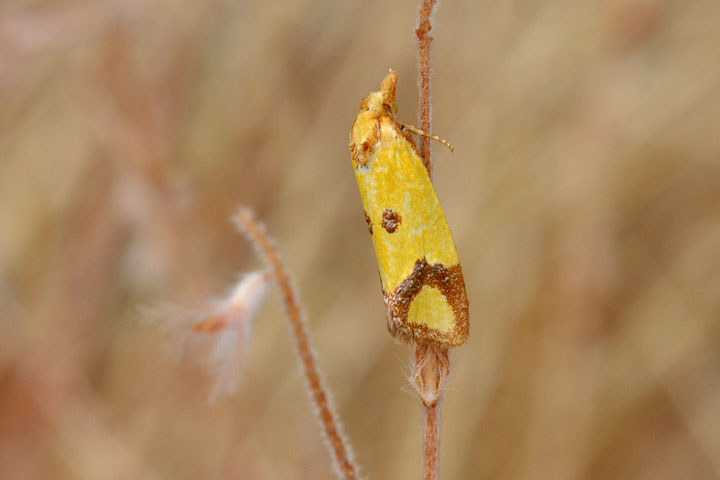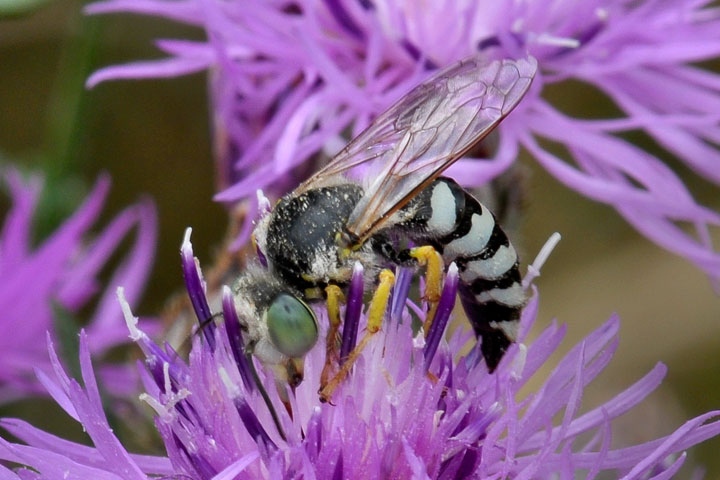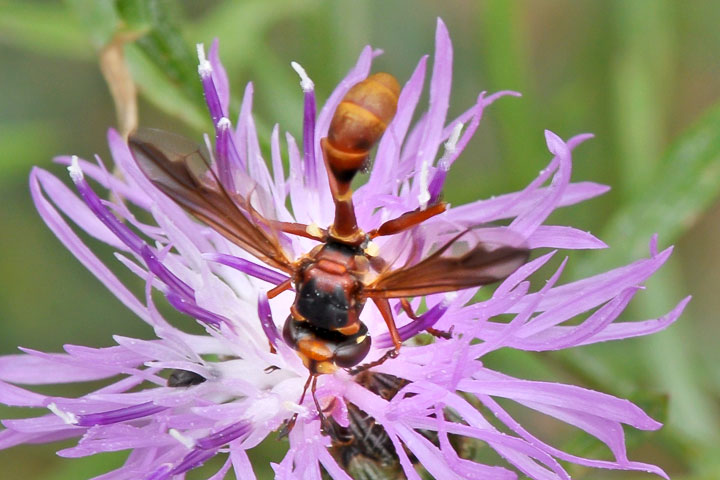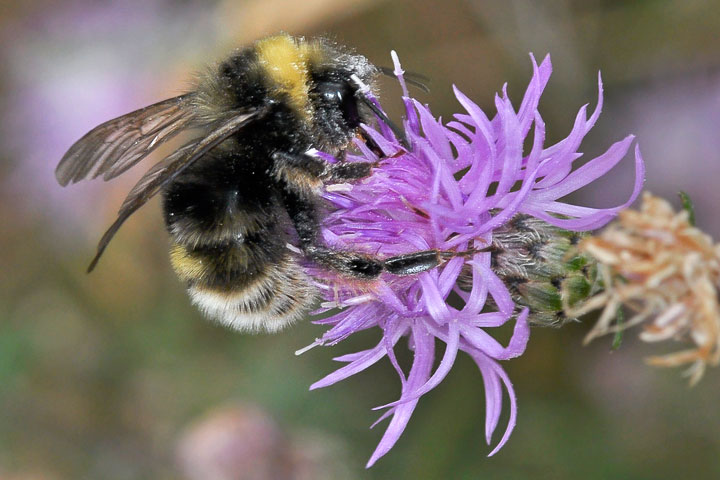Observations during a walk along the shore on August 7, 2010.
The Kootenay-Lake Website offers a discussion and more pictures of the local moths, solitary wasps, flies, and social bees.
*********
This tiny, easily overlooked, creature is the sulphur knapweed moth. It is an Eurasian import used for biological pest control of knapweed. The adult lives for only a few days, during which time the female lays eggs on stems and leaves. The larva, a root miner, moves to the root of the plant and tunnels through the cortex as it feeds. Not surprisingly, it was seen in the vicinity of spotted knapweed.
Nearby the sulphur knapweed moth there was a vigorous growth of spotted knapweed. Extracting nectar from the knapweed was a sand wasp.
Also feeding on the spotted knapweed was a thick–headed fly. This fly is a predator on the sand wasp. It waits at a flower, grabs the wasp and plants an egg on it. The larva then consumes the wasp from inside.
A conservationist’s dilemma: The most striking visitors to the spotted knapweed, however, were a few western bumble bees, a nearly extirpated species. In the last half–dozen years, this once common pollinator of western NA has vanished from the US, and now is almost gone from southern BC. On this occasion, a few had established an interrelationship with the vilified knapweed. The dilemma: does one eradicate the dreaded knapweed and further stress a major pollinator, or leave it to spread? For those who know the stories of the two species involved, this is a troublesome picture.
